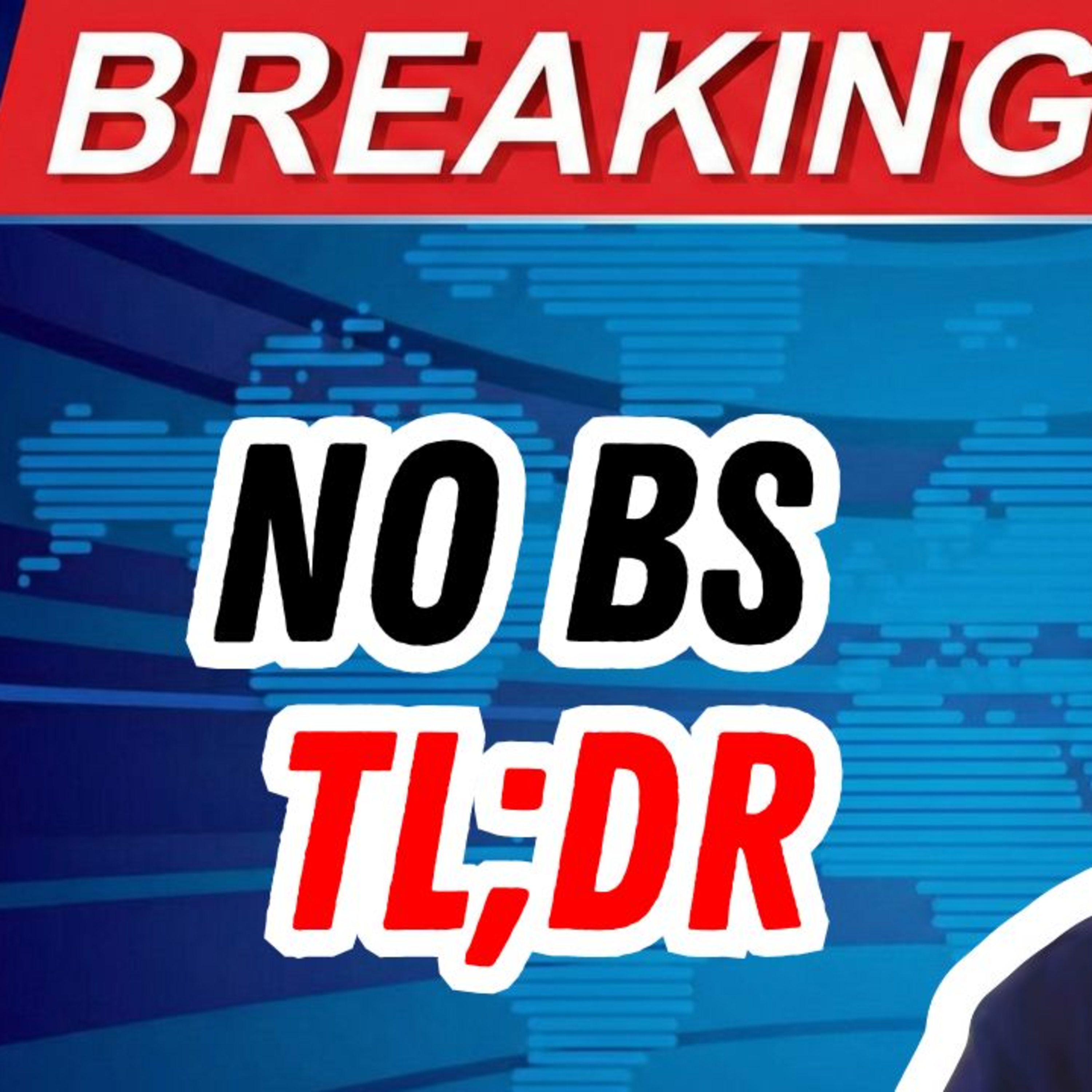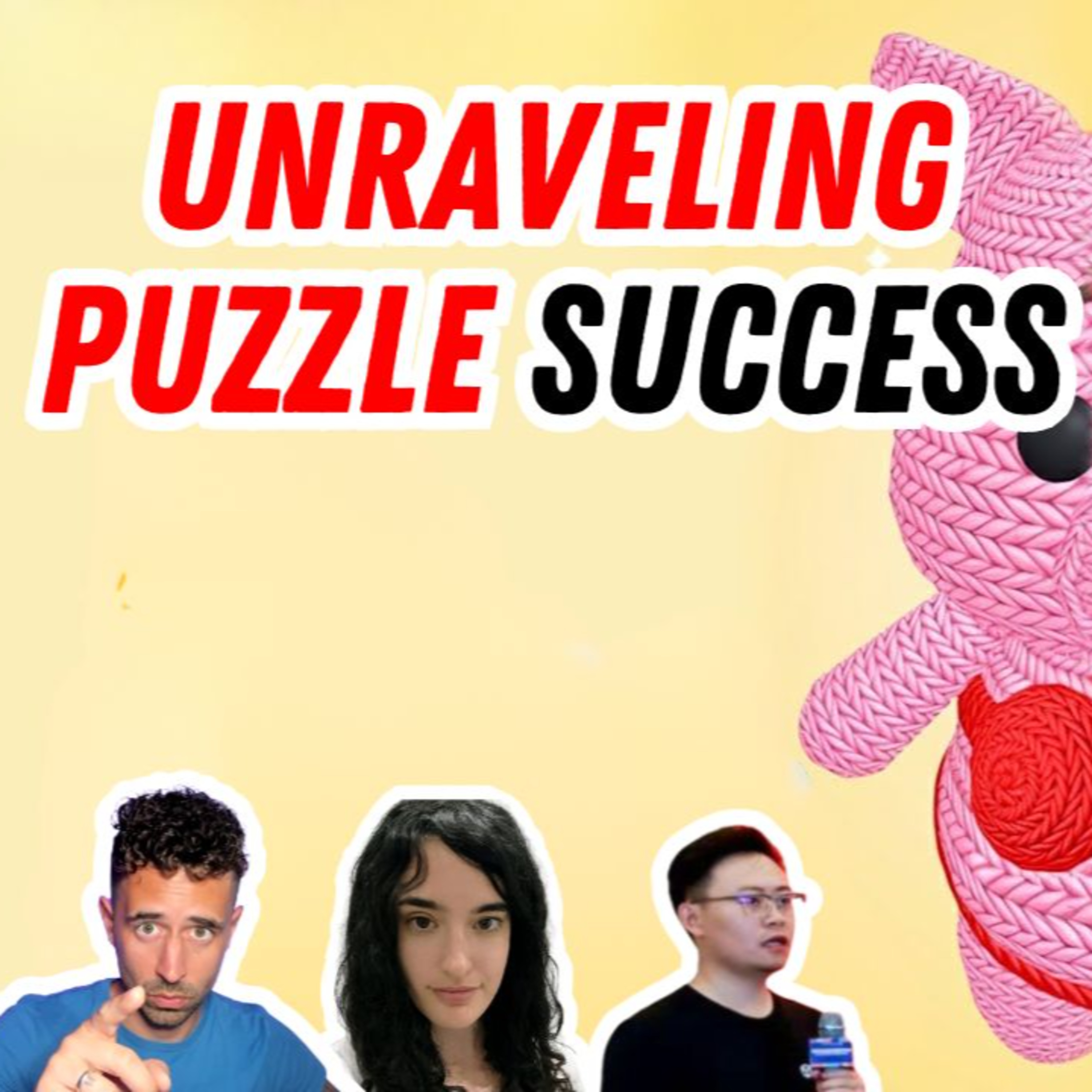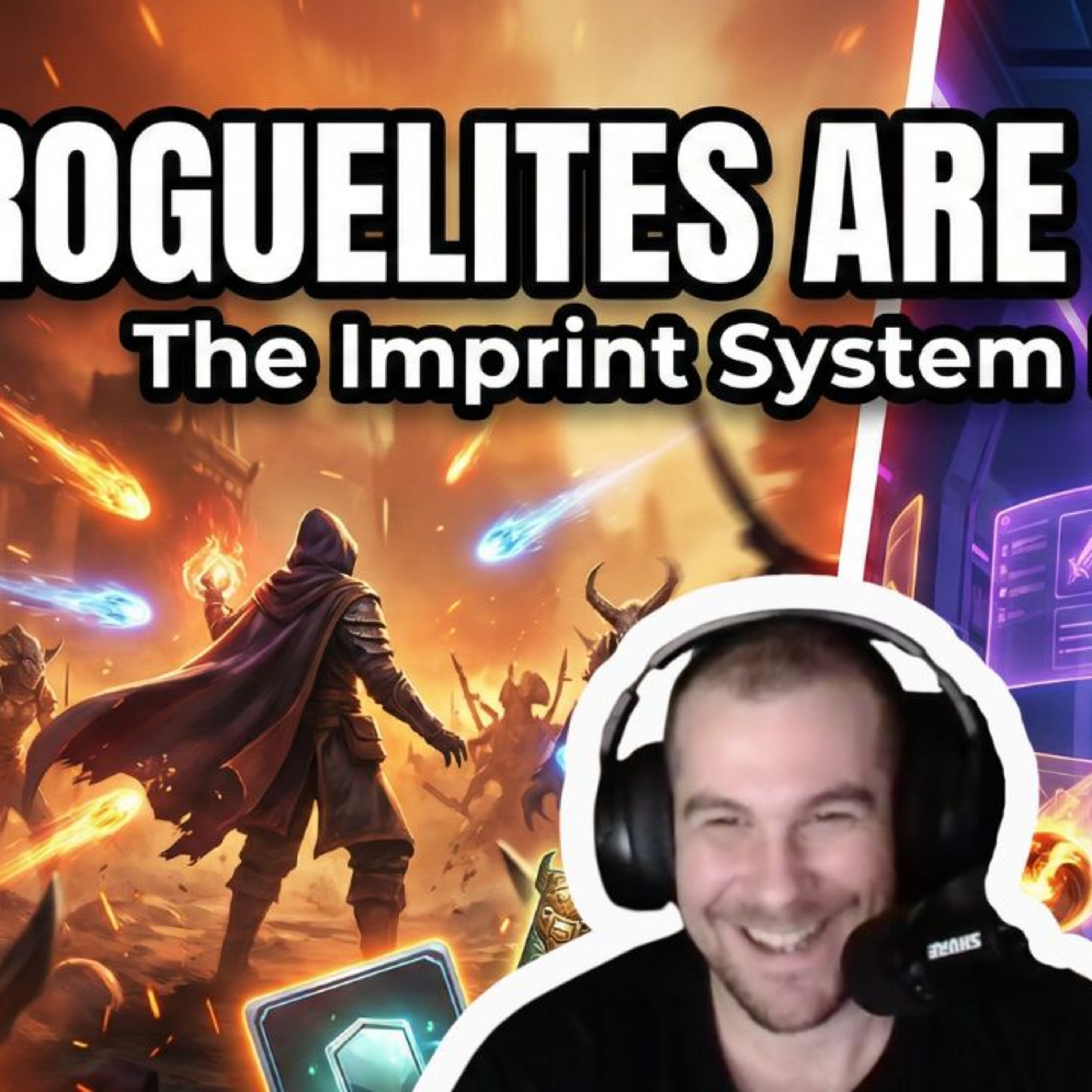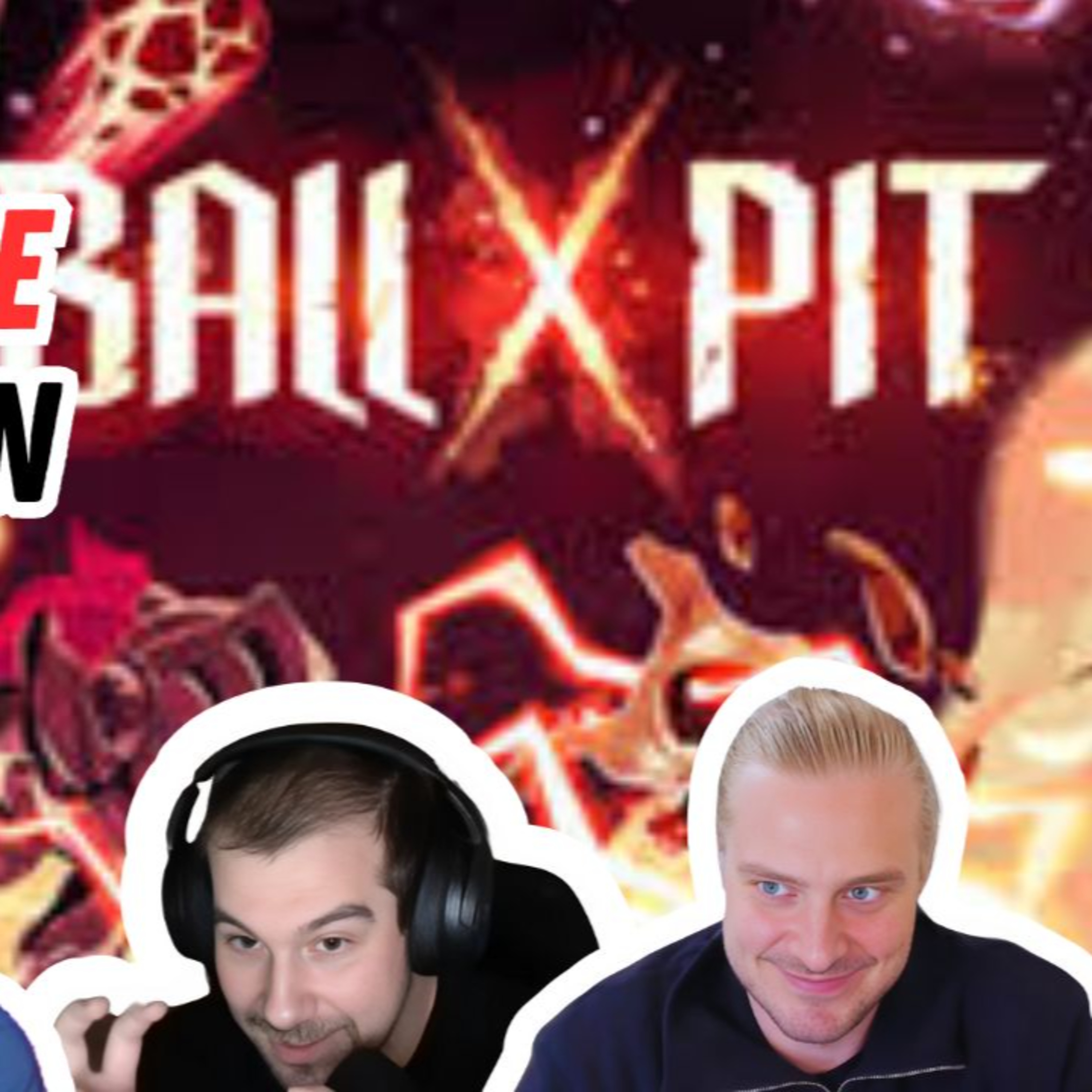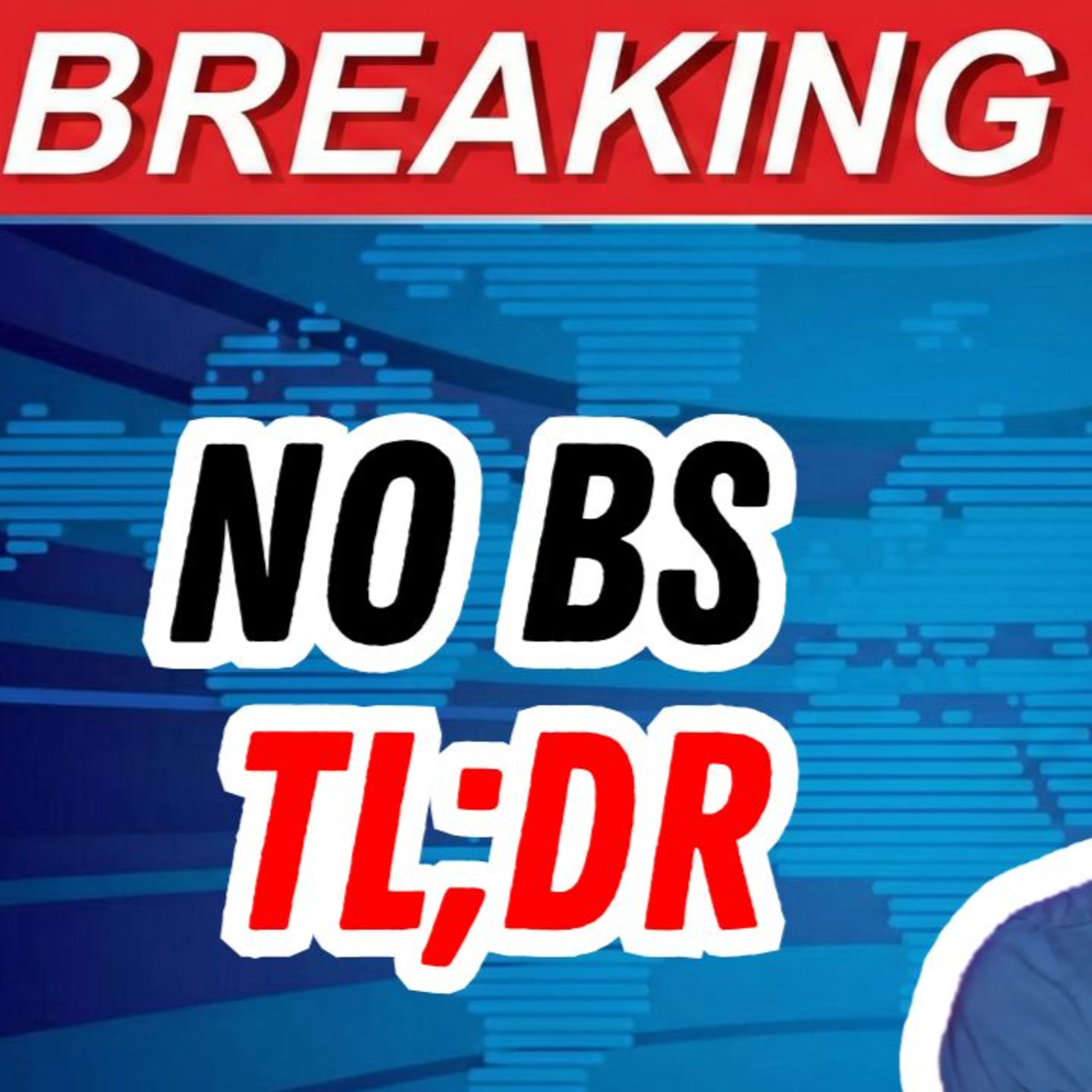The Evolution of Mobile Advertising Explained: How to make Ad revenue by Felix Braberg
In this episode, Felix Braberg dives deep into the mobile mediation market, exploring its history, the evolution of mobile advertising, and the key players in the mediation space. He discusses the importance of ad revenue, how it is calculated, and best practices for app developers to maximize their earnings.
He also covers strategies for soft launching apps and optimizing ad stacks as developers scale their operations.
---------------------------------------
101 ad monetization guide
https://lancaric.substack.com/p/getting-started-with-ad-revenue-applovin
https://lancaric.substack.com/p/everything-you-need-to-know-about
https://lancaric.substack.com/p/getting-started-with-ad-revenue-unity
---------------------------------------
This is no BS gaming podcast 2.5 gamers session. Sharing actionable insights, dropping knowledge from our day-to-day User Acquisition, Game Design, and Ad monetization jobs. We are definitely not discussing the latest industry news, but having so much fun! Let’s not forget this is a 4 a.m. conference discussion vibe, so let's not take it too seriously.
Panelists: Jakub Remiar, Felix Braberg, Matej Lancaric
Youtube: https://youtu.be/Q9W04l1u8UI
Join our slack channel here: https://join.slack.com/t/two-and-half-gamers/shared_invite/zt-2um8eguhf-c~H9idcxM271mnPzdWbipg
Chapters
00:00 Introduction to Mobile Mediation and Ad Revenue
03:05 The Evolution of Mobile Advertising
05:48 The Rise of Mediation Platforms
09:07 Understanding Mediation Platforms: Pros and Cons
11:59 How Ad Revenue is Calculated
14:59 Best Practices for Ad Networks
17:53 Strategies for Soft Launching Apps
20:46 Scaling and Ad Stack Optimization
---------------------------------------
Matej Lancaric
User Acquisition & Creatives Consultant
https://lancaric.me
Felix Braberg
Ad monetization consultant
https://www.felixbraberg.com
Jakub Remiar
Game design consultant
https://www.linkedin.com/in/jakubremiar
---------------------------------------
Takeaways
Mobile mediation is crucial for maximizing ad revenue.
The App Store's launch in 2008 revolutionized app discoverability.
AdMob was the first to show ads in mobile apps.
Mediation platforms help developers get better ad prices.
ECPM and fill rates are key to understanding ad revenue.
Competition among ad networks increases revenue potential.
Soft launches require a focus on ad impressions over ECPM.
Scaling requires a more sophisticated ad stack.
Understanding user behavior is essential for ad success.
The mobile advertising landscape is constantly evolving.
---------------------------------------
Please share the podcast with your industry friends, dogs & cats. Especially cats! They love it!
Hit the Subscribe button on YouTube, Spotify, and Apple!
Please share feedback and comments - matej@lancaric.me
---------------------------------------
If you are interested in getting UA tips every week on Monday, visit lancaric.substack.com & sign up for the Brutally Honest newsletter by Matej Lancaric
Latest article - https://open.substack.com/pub/lancaric/p/match-3d-ua-playbook-real-data-inside?r=7qqaf&utm_campaign=post&utm_medium=web&showWelcomeOnShare=true
Do you have UA questions nobody can answer? Ask Matej AI - the First UA AI in the gaming industry! https://lancaric.me/matej-ai
Felix Latest Article -
https://www.felixbraberg.com/post/the-end-of-gam-and-admob-placement-refreshes
Press play and read along
Transcript
Speaker 1 It's usually classified that after 25k a day, that means you're able to extract account management, help, yeah, help with scaling, things like that.
Speaker 1 But that also means that your ad stack changes quite considerably after 25 to 50k a day.
Speaker 1 So what changes when you've gotten to that kind of scale is that basically you need to have a lot more demand competing for your supply to kind of work against the recency effect that we talked about before.
Speaker 2 This is a no-bullshit gaming show where we talk about games and their revenue in great detail, powered by our ad monetization, game design, and user acquisition triple threat expertise.
Speaker 2 Welcome to the two and a half gamers, the unfiltered truth served with a side of giggles.
Speaker 2 Let's not forget this is a 4am conference discussion vibe, so let's not take it too seriously. Tune in now and stay two and a half steps ahead of the gaming industry.
Speaker 1 Hello everyone and welcome to a very special episode of ASMR Insights.
Speaker 1
This is part of the two and a half gamers show where we bring experts on to talk about something that they know extremely well. And today, it's my turn.
And the spotlight is on me.
Speaker 1 And I'm excited to share insights on a subject that I know a lot about, which is the mobile mediation market.
Speaker 1 I'll be discussing with you how it works, best practices, and offering some useful tips and tricks. First of all, who am I and why should I have the right to talk about this? So my name is Felix.
Speaker 1 I'm one of the hosts on Two and a Half Gamers and I am an ad monetization consultant.
Speaker 1 I've been been working with ads in mobile applications for about eight years and i started off working in two dsps and one ad network and after that i worked in several large publishers for example i manage the ad revenue of tetris e-side games and a couple of other studios and most recently i've been doing this as a consultant so i worked on both sides of the fence basically also both buying the ads, selling the ads and being on both sides of the fence.
Speaker 1 Clients I've worked with, while I've worked with them, have earned about $350 million in ad revenue. So that's kind of how I learned everything about ad revenue.
Speaker 1 But what I want to talk about today is that I wanted to split this recording in a few parts.
Speaker 1 So by the end of it, you will not only know how the mediation market works, but how it was founded and also how to navigate it.
Speaker 1 How I'm going to divide this up is a couple of chapters. So first, I've actually written a history lesson about mobile mediation and how it came to be and mobile ads in general.
Speaker 1 And also, I'm going to go through who are the main players right now in the mediation space and highlight some of the pros and cons of these players.
Speaker 1 Also, I'm going to go into how you get paid for ads in your mobile application or game, what networks to start with, and what to keep in mind when you're launching ads and what ad metrics to look for if you're soft-launching a game or an application, and how to think about mobile ads during the scaling phase.
Speaker 1 The aim of this talk is that afterwards, you as a mobile app or game developer will be able to understand the market dynamics and ultimately, hopefully, increase your ad revenue on your mobile game or mobile application.
Speaker 1 So, let's kick it off and start with a brief history of advertising in mobile applications.
Speaker 1 So, for this history lesson, we need to go back in time to 2006.
Speaker 1 This is the year when you could go see Blood Diamond, Casino Royale, and other movies like that in the cinema.
Speaker 1 And the market for mobile phones and operating systems at this time was fragmented, and you couldn't easily discover or download apps at all.
Speaker 1 You actually had to download them directly from websites, which were often untrustworthy or would lead to you getting viruses.
Speaker 1 Or you could rely on rudimentary carrier-specific portals that sucked and had a limited amount of apps.
Speaker 1 So you had this dynamic where a lot of people were using smartphones, but they were not downloading apps since the app market had no
Speaker 1 standards and was fragmented. This all changed on July 10th, 2008,
Speaker 1 because this was the day that the App Store launched with its original 500 apps.
Speaker 1 We had apps like MySpace Mobile, Pac-Man, Tetris, and Evernote.
Speaker 1 And most of the developers who were part of the original 500 apps that went live that day went on to make millions because the App Store was such an absolute raging success.
Speaker 1 Having access to millions of customers across the world and being able to connect with them and having them pay seamlessly for things basically just took off like a rocket.
Speaker 1 In 2009, the App Store grew its apps by 12,900% to 65,000 apps.
Speaker 1 And then in the following year in 2010 to 220,005,000 apps.
Speaker 1 It wasn't long before Google caught on to this and launched their own Google Play Store with 16,000 apps in 2009, which grew to 100,000 apps in 2010.
Speaker 1 So everyone with a smartphone was downloading apps, and the app stores were generating a tremendous amount of money for their respective companies.
Speaker 1 But this growth all had one big flaw. So as the number of apps grew, the discoverability on both the Play Store and the App Store started to deteriorate.
Speaker 1 And if you open your smartphone right now, you can kind of see the flaw in the App Stores even today.
Speaker 1 You have 4.8 million apps today in the App Store and 2.4 million apps on the Google Play Store today in 2024. It's so many to comprehend.
Speaker 1 And how the hell do you actually find and download new apps that you actually want to use?
Speaker 1 So the main issue was and still is today that the discoverability on the app stores is absolutely shit.
Speaker 1 Apple back in the early 2010s
Speaker 1 basically combated this by anointing or essentially crowning some people in their organization, which is their featuring team, to select some apps that they liked for whatever reason, and then gave a top real estate in the app stores, which guaranteed you downloads, which generated a ton of revenue.
Speaker 1 Google followed suit, and soon both stores also ranked apps by downloads and other tools to bring apps or games to prime real estate locations in the App Store.
Speaker 1 I heard some crazy stories when I was starting off in this industry six or seven years ago about the lengths that developers used to go through to actually get good featurings.
Speaker 1 One of them actually comes to mind where a developer flew some people out to meet them and had shipped in two Rolls-Royce Phantom cars to meet them on the tarmac of the airport and then bribed some local police officials to escort them to the office while riding their own Rolls-Royce Phantom to the office.
Speaker 1 This was all in order to get a good featuring in the stores.
Speaker 1 I'm not going to mention where it was or who it was, but you can imagine if you're in a location where you can bribe police officers.
Speaker 1
It's not exactly the countries where Rolls-Royce's tend to grow on trees. Anyway, I digress.
So in 2023, the app stores generated $89.6 billion
Speaker 1 in IAP revenue, and the Google Play Store generated $47 billion in IAPs.
Speaker 1 That's a lot of money for developers.
Speaker 1 And as you can hear from my ridiculous story from the early 2010s simply reply relying on a small group of people to feature your app or game simply is not a good business plan for developers to generate downloads
Speaker 1 the only solution to the problem of shit discoverability in the app stores was to start showing ads inside of the apps to help users discover new games or applications AdMob is accredited with showing the first ad inside of an app in 2006.
Speaker 1 And in 2009, a year after the app stores were released, AdMob was purchased by Google for $750 million in Google stock, which you can imagine has appreciated quite sizably since then. So now
Speaker 1 applications on the app store,
Speaker 1 so now applications on the app store could show ads in their applications.
Speaker 1 to open a second revenue stream, which would be able, which enable you to actually earn
Speaker 1 from actually selling the eyeballs of the users in your applications. So that's when app developers also became known as publishers.
Speaker 1
So that gave rise to a bunch of different networks where app developers could buy or sell ads. And this kind of created a problem for the new publishers.
So the mobile advertising market is like any
Speaker 1 town square market and has the same issues. So mobile publishers now had a lot of eyeballs that they wanted to sell for ads.
Speaker 1 The issue is that if you go to one network to sell your inventory, you'll get a horrible price.
Speaker 1 And the best way to get the highest price for your inventory is to go to several networks and have them bid independently on your inventory.
Speaker 1
So that gave rise to the mediation platform. So a mediation platform is like a town square where you can connect to multiple networks to bid on your inventory.
Today, depending on the source,
Speaker 1 about 40 to 50% of all downloads in the two app stores are paid downloads that are facilitated by networks through the that bid in through these mediation platform.
Speaker 1 So if we fast forward to today, it's
Speaker 1 December 28th when I'm recording this. So
Speaker 1 there are three main mediation platforms that basically control the majority of the market. You have AdMob mediation by Google, which of course we went through here is the first one.
Speaker 1 We have LevelPlay by Unity, which is owned by Unity. And we have Macs, which is owned by Appleven.
Speaker 1 So what I'm going to do now is actually go through the pros and cons of these main mediation platforms. So
Speaker 1 first of all, we have admob mediation. And the pros of admob mediation is that it's extremely strong on banner performance.
Speaker 1 So the price that you get paid for banners in admob mediation tends to be the highest. It has very good ad quality,
Speaker 1 which means that the end cards that you see on creatives are very short and are very easy to click out of. And also, they have very good account management.
Speaker 1 So actually, one of the main pros here is that they they have very low thresholds before you actually get a human to speak to, which can help you out quite a lot.
Speaker 1 So I think the threshold is around $3,000 or $4,000 a day in ad revenue before you reach this. The cons of ad mob mediation is that reporting is very clunky.
Speaker 1 Key ad monetization metrics are harder to extract and extract here compared to other platforms.
Speaker 1
And the video performance or the ECPM that you get paid on video is sometimes higher on on other platforms. And the dashboard can be clunky to use and set up.
So those are the pros and cons of AdMob.
Speaker 1 So LevelPlay is the second one. It was built by
Speaker 1 IronSource, which was in turn acquired by Unity in 2022.
Speaker 1 And they now operate it. So just like with AdMob, here are the pros and cons of Unity Level Play.
Speaker 1 So we'll start with the pros. So this is probably what I would say LevelPlay play is the best dashboard for data manipulation and data management.
Speaker 1 There's great rewarded video and interstellar e CPM. There's a great
Speaker 1 review tool where you can check the ads that are actually running inside of your app.
Speaker 1 And they actually have in-house ad placement game designers that can help you with ad design tips if you're large enough.
Speaker 1 And also, it's easy to integrate it if you're building your game or app in Unity. The cons of Unity level play is that banner performance is frequently higher on other mediation platforms.
Speaker 1 Cross-promotion tool that they have you have to pay extra for.
Speaker 1 And the UA performance from its first party owned networks can be better on other platforms.
Speaker 1 And also the video length and end cards on Iron Source and Unity are quite aggressive and they do show the most ads on this mediation platform which can lead to a
Speaker 1 reduction in your retention.
Speaker 1 Finally, you have the largest mediation platform on the market which currently has the largest market share and that's Max Mediation.
Speaker 1 And the pros of Max Mediation is that it has the highest ECPM on video inventory. And using Max gives you access to the Ad ROAS or blended ROAS UA campaigns on Appleven.
Speaker 1 Essentially what I think those UA campaigns do, which Mati will tell you, is that you actually optimize for ad views instead of IAP sales in your app.
Speaker 1 The emphasis in max mediation is on bidders, which reduces the amount of manual work, but there's also a broad availability of networks, which is helpful.
Speaker 1 The main cons of max mediation is that the cross-promotion tool has been deprecated and users must now use Google Ad Manager.
Speaker 1 And Appleven has extremely aggressive video end cards and extended creative lengths that will harm your retention.
Speaker 1 So those are the three main kind of
Speaker 1 mediation platforms that are currently in the market. And if you're looking to start showing ads in your game or app, those are the three ones you can really choose between.
Speaker 1 And those are the ones that have the largest market share.
Speaker 1 So the next question that I get asked quite a lot is, what do I actually get paid for for showing ads, which is actually a bit of a difficult question.
Speaker 1
And it's difficult in the sense that it depends on two things. And the two things it depends on is ECPM and fill rate.
So I'm actually going to go through those right now.
Speaker 1 So ECPM is essentially the effective cost per melee. It's what a network pays you for a thousand impressions in your application or your game.
Speaker 1 So how is ECPM calculated? So networks rely on algorithms that use current and historic metrics to calculate what they're actually willing to pay for an impression.
Speaker 1 Different networks have different amount of data. So I've heard rumors that Google uses 94 different factors to calculate the ECPM.
Speaker 1
AppLovin I've heard uses 71. I don't know if it's true or not.
And Level or Iron Source, I've heard uses 67 different factors to calculate what ECPM they're willing to pay for a user.
Speaker 1 So
Speaker 1 network algorithms all use a couple of things though.
Speaker 1 So they take into account things like the amount of unique viewers that you have in your application, the CTR, that is to say the click-through rate that users click through on the ads that they see in your app.
Speaker 1 What the install rate is, that is to say how many of the users that see an ad actually install it, which is actually what these companies are getting paid for.
Speaker 1 The competitiveness, how often they win or lose an application. So, yeah, essentially, how many other networks are they competing with? Also, geolocation, very important.
Speaker 1 Everyone knows that the ECPM for the US user is always the highest because they have the highest spending power. And whereas in other locations of the world, it's going to be lower.
Speaker 1 And one of the main factors also is how many impressions have been previously shown to a user. That is to say, it's called in the business the recency effect.
Speaker 1 So all networks rely on something called the recency effect, which is they assume that a user has more attention on the first impression rather than subsequent impressions, which is done on a daily basis.
Speaker 1 So
Speaker 1 if you're showing your users, let's say, 10 or 15 rewarded ads, you're going to get paid less and less for each rewarded ad that you show to a user during a day.
Speaker 1 So the second part of the question of how much you're actually getting paid for an impression is the fill rate.
Speaker 1 And the fill rate is essentially the percentage of time when you call for an ad that is actually filled by a network. So the ECPM plus the fill rate equals ad revenue.
Speaker 1 So now we can actually start beginning to answer what you actually get paid per impression. So as you can see, it's like one of these difficult things to actually answer because
Speaker 1 it depends, right? So as we went through here, it depends on a large amount of factors that basically you don't have that much control over. But those are kind of the market forces that decide
Speaker 1 what an impression to one of your users is actually worth on average.
Speaker 1 Bit of a boring answer, so I pulled some averages.
Speaker 1 So this could really vary quite a lot, but a user that sees a rewarded impression in the us in an app or a game you should expect to be paid anywhere between a cent one us dollar cent to three us dollar cents for one rewarded video impression in the states uh this goes down when in yeah in non-us geos quite a lot uh you could be expected to get paid anywhere from half a cent to a fraction of a cent in some geos
Speaker 1 and yeah for interstitials, you're getting paid anywhere in the States between
Speaker 1 six a sixth of a cent to
Speaker 1 one one and a half cents in the US, depending on iOS or Android.
Speaker 1 So
Speaker 1 the whole name of the game is if you're trying to earn money from ads, you need to show a lot of impressions to your users and have them stick around.
Speaker 1 So moving on,
Speaker 1 how do I think about mediation? So let's say you're getting started and you actually want to earn some ad revenue. So
Speaker 1 what is a good benchmark and how should you think about working with the different ad networks? So like I said earlier, one of the main components in eCPM and how it's calculated is competitiveness.
Speaker 1 So the main thing that you can do as a developer to increase the value of your
Speaker 1 user's ecpm is actually to have a lot of competition.
Speaker 1 So that means that you need to select a few networks that are actually strong enough or big enough to actually generate value and compete against each other.
Speaker 1 So what networks should you actually start with? So
Speaker 1 the best practice here is because essentially this will be out of date as soon as I record it because the
Speaker 1 value of networks fluctuates constantly between whoever has had the most UA dollars flowing through it.
Speaker 1 So the best way I actually usually recommend is to actually check the AppSlire performance index for the best networks.
Speaker 1 So go in there, download it, check your geo, and then start working with probably the four or five largest ones.
Speaker 1 So as a rule of thumb is the better or higher it ranks on a UA leaderboard, the more money they will pay for your inventory because they have more advertisers spending money.
Speaker 1 So for banners, a good rule of thumb is right now I'd recommend to start working with Google, Meta, App Loven, Unity, Digital Turbine, and ImoBi.
Speaker 1 For interstitials, I would recommend here again, Google, Meta, App Loven, Unity, Digital Turbine, LiftOff, IronSource, and Mintigril.
Speaker 1 And for rewarded, I would recommend Google, Meta, AppLoven, Unity, Digital Turbine, LiftOff, IronSource, and Mintegril. So remember that that changes constantly.
Speaker 1 So just check the rankings so you kind of know what the best ones are to use.
Speaker 1 So let's shift gears a little bit and talk about how you should think about ads during a soft launch or an early phase of a app development or game development phase.
Speaker 1 So as you heard, you don't get paid that much for showing ads inside of applications.
Speaker 1 Like I said, for rewarded video in the States, it's anywhere between one to three cents per impression, if you're lucky. So the name of the game is that you need to
Speaker 1 show more than one, ideally more than five to ten impressions of video impressions per user per day for it to generate enough advertising revenue to actually have a meaningful impact on your bottom line.
Speaker 1 So traditionally, if you're building a game that's a 70-30 split in terms of ads versus IAP revenues, that means that you probably need to have
Speaker 1 an ad viewer rate, that is to say the percentage of users that see ads
Speaker 1 of around 50 to 60 percent.
Speaker 1 And also, those users that see ads, they need to watch at least five to ten rewarded ads to actually have a meaningful impact on the bottom line over a normal day 30 retention curve.
Speaker 1 So, usually, during soft launch, what I actually recommend to do is that you don't even care about the ECPM so much at this point, but basically you're just tracking how many ads you can make users watch a good benchmark what you can aim for is that during soft launch you want to show
Speaker 1 if you want to have a 30 70 splits you want to show maybe five to seven rewarded ads on a 45 percent ad viewer rate on rewarded
Speaker 1 and anywhere between two to seven interstitial ads on that same time frame So that brings me to the next part. So after soft launch, that's typically when you start adding a mediation platform.
Speaker 1 Then, I would recommend you to start working with the networks that I talked about before. And then, suddenly, you'll find yourself earning anywhere between maybe two to 15K a day in ad revenue.
Speaker 1 That usually means that you need to work with about six to ten different ad networks that you have hooked up in your mediation platform.
Speaker 1 And a good way of actually gauging if a network is good or not to work with is
Speaker 1 are they making at least 5%
Speaker 1 of the share of revenue? So, what you actually do is you look at the last 30 days and you see by network, you calculate a percentage of the revenue that they're earning.
Speaker 1 So, any network that's earning less than 5%
Speaker 1 is not a great network partner for you because they're not really competing enough to be warranting a place in your ad stack. So, that means that they should be replaced.
Speaker 1 So, how mediation platforms kind of categorize
Speaker 1 publishers is basically based on size. So it's an unfair market.
Speaker 1 So the kind of benefits you can extract if you're a publisher earning $100,000 a day, it's very different from the benefits that you can extract if you're earning $1,000 a day.
Speaker 1 So it's usually classified that after 25K a day, that means you're able to extract account management, help, yeah, help with scaling, things like that.
Speaker 1 But that also means that your ad stack changes quite considerably after 25 to 50k a day.
Speaker 1 So, what changes when you've gotten to that kind of scale is that basically you need to have a lot more demand competing for your supply to kind of work against the recency effect that we talked about before.
Speaker 1 So, usually, then, if you're showing that many ads, that means you either have a lot of users watching a lot of ads or both kind of together.
Speaker 1 And that means that you need to change your ad stack a little bit and have more custom-built solutions that actually help you to earn more ad ad revenue. So,
Speaker 1 if you're kind of curious on how the three main mediation platforms actually work and how to actually get started, if you're a bit of a beginner, I've actually written a four-part series that's live on Matthias's website that I'll actually have a link to at the bottom here, which you can actually read on your own.
Speaker 1 And then after that, you'll actually be able to know how to set things up in the mediation platforms.
Speaker 1
But I think that's enough for today. Rambling alone is very hard, but I hope you got some value from this.
And we'll see you on the next episode of Two and a Half Gamers. Thank you for stopping by.

